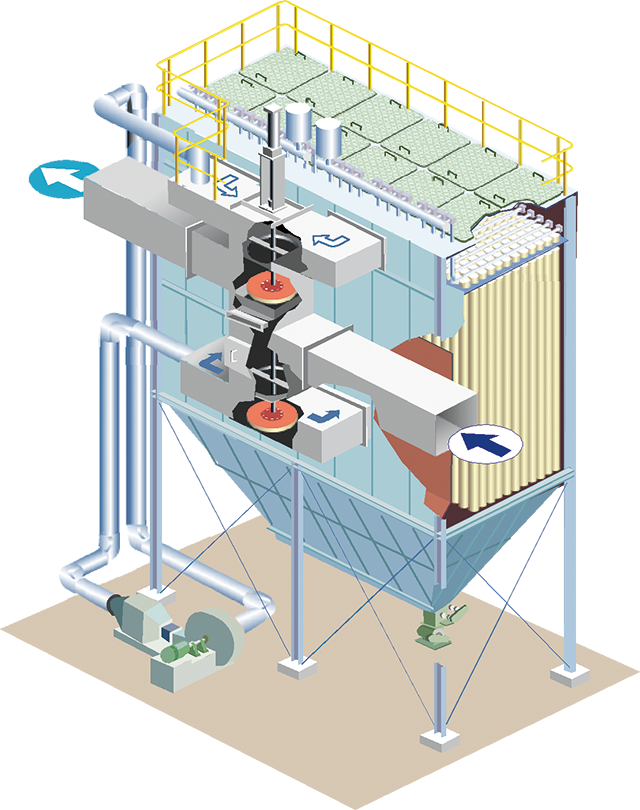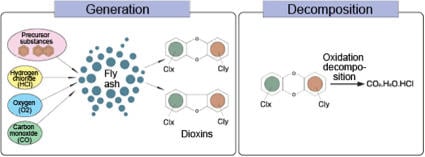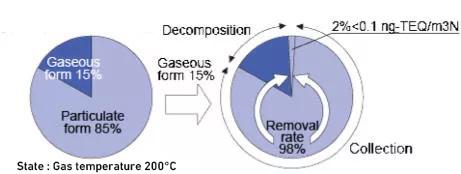Catalyst Fabric Filter
Regulations on hazardous substances contained in exhaust gas from incinerators for municipal waste, etc. have been strengthened in recent years. In particular, emission regulations for dioxins have been tightened, and dioxins must be reduced to 0.1 ng-TEQ/m³N or lower for newly established incinerators.
The catalyst fabric filter incorporates a filter cloth equipped with a catalyst which decomposes and removes gaseous dioxins, and has removal performance that sufficiently clears the emission regulations.
Compared to the conventional methods (catalyst tower, activated carbon adsorption tower, and activated carbon blowing), the catalyst fabric filter does not require the installation of processing towers, silos, or blowing devices, and therefore occupies a smaller installation space.

Mechanisms of dioxin generation and decomposition

Dioxin emission standards (Note) (waste incinerator)
| Incineration capacity | New incinerators | Existing incinerators | |
|---|---|---|---|
| Until November 30, 2002 | From December 2002 and beyond | ||
| 4 tons/hr ≤ 2 tons/hr ≤ to < 4 tons/hr < 2 tons/hr |
0.1 1 5 |
80 | 1 5 10 |
- Unit: ng-TEQ/m³N or less (at 12% O2)
Comparison of catalyst fabric filter with other methods

Performance of catalyst fabric filter (our company results)

State of dioxins in exhaust gas and their removal rate

